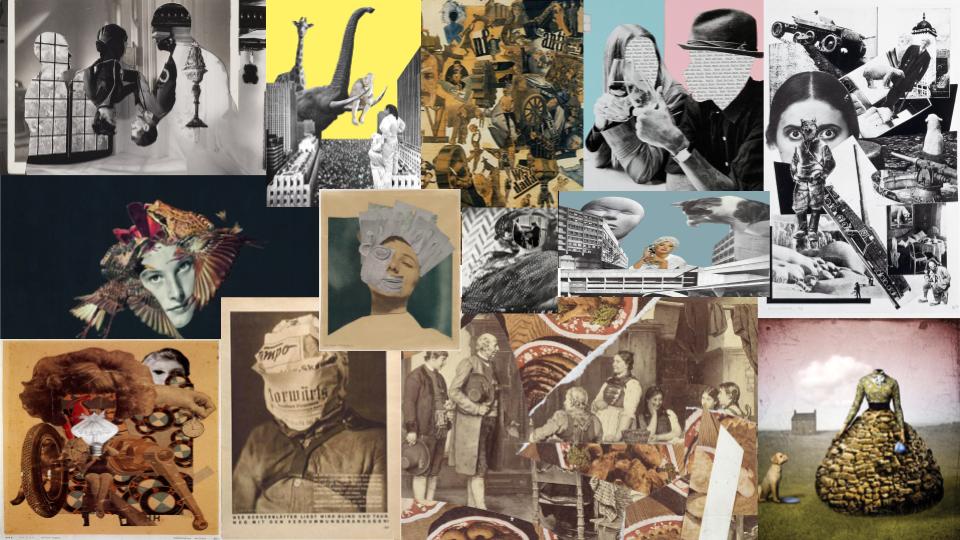Photomontage is the process and the result of making a composite photograph by cutting, gluing, rearranging and overlapping two or more photographs into a new image. It is often used as a way of expressing political disagreement. It was first used as a technique by the Dadaists in 1915 in their protests against the First World War. It was later used by the surrealists who explored the possibilities of photomontage by using it to bring together widely contrasting images, in order to reflect the workings of the unconscious mind. In 1923, the Russian constructivist Aleksander Rodchenko began experimenting with photomontage as a way of creating socially engaged imagery exploring the placement and movement of objects in space. Other artists who have used this technique are John Heartfield, the German artist who reconstructed images from the media to protest against Germany’s Fascist regime and Peter Kennard; whose photomontages explored issues such as economic inequality, police brutality and the nuclear arms race between the 1970s and the 1990s.

JOHN STEZAKER
John Stezaker ( 1949 – ), is a British conceptual artist. His work is surreal in tone and is often made using collage and the appropriation of pre-existing images such as postcards, film stills, and publicity photographs. Art historian Julian Stallabrass said, “The contrast at the heart of these works [by Stezaker] is not between represented and real, but between the unknowing primitives of popular culture, and the conscious, ironic artist and viewer of post-modern images.” One work included in an exhibition at Salama-Caro Gallery, London, in 1991, depicted an image of a punch clock together with the caption “Why Spend Time on an Exhibition Like This?”.



